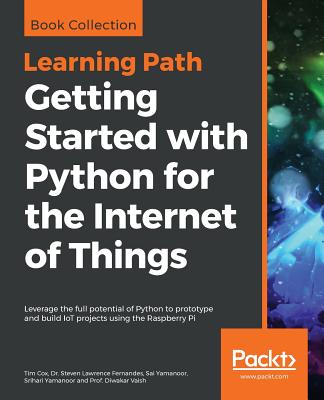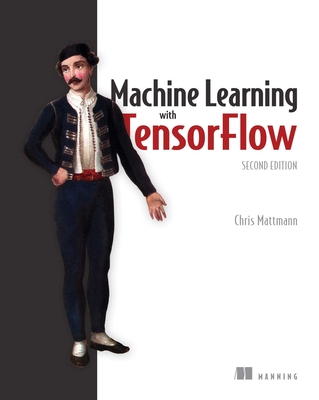Raspberry Pi 3 Cookbook for Python Programmers - Third Edition: Over 70 recipes for Python Programmers to unleash the potential of Raspberry Pi 3
暫譯: Raspberry Pi 3 Python 程式設計師食譜 - 第三版:超過 70 道食譜幫助 Python 程式設計師發揮 Raspberry Pi 3 的潛力
Tim Cox, Dr. Steven Lawrence Fernandes
- 出版商: Packt Publishing
- 出版日期: 2018-04-30
- 售價: $1,490
- 貴賓價: 9.5 折 $1,416
- 語言: 英文
- 頁數: 552
- 裝訂: Paperback
- ISBN: 1788629876
- ISBN-13: 9781788629874
-
相關分類:
Raspberry Pi、Python
海外代購書籍(需單獨結帳)
相關主題
商品描述
A recipe-based guide to programming your Raspberry Pi 3 using Python
Key Features
- Leverage the power of Raspberry Pi 3 using Python programming
- Create 3D games, build neural network modules, and interface with your own circuits
- Packed with clear, step-by-step recipes to walk you through the capabilities of Raspberry Pi
Book Description
Raspberry Pi 3 Cookbook for Python Programmers – Third Edition begins by guiding you through setting up Raspberry Pi 3, performing tasks using Python 3.6, and introducing the first steps to interface with electronics. As you work through each chapter, you will build your skills and apply them as you progress. You will learn how to build text classifiers, predict sentiments in words, develop applications using the popular Tkinter library, and create games by controlling graphics on your screen. You will harness the power of a built in graphics processor using Pi3D to generate your own high-quality 3D graphics and environments.
You will understand how to connect Raspberry Pi's hardware pins directly to control electronics, from switching on LEDs and responding to push buttons to driving motors and servos. Get to grips with monitoring sensors to gather real-life data, using it to control other devices, and viewing the results over the internet. You will apply what you have learned by creating your own Pi-Rover or Pi-Hexipod robots. You will also learn about sentiment analysis, face recognition techniques, and building neural network modules for optical character recognition.
Finally, you will learn to build movie recommendations system on Raspberry Pi 3.
What you will learn
- Learn to set up and run Raspberry Pi 3
- Build text classifiers and perform automation using Python
- Predict sentiments in words and create games and graphics
- Detect edges and contours in images
- Build human face detection and recognition system
- Use Python to drive hardware
- Sense and display real-world data
- Build a neural network module for optical character recognition
- Build movie recommendations system
Who This Book Is For
This book is for anyone who wants to master the skills of Python programming using Raspberry Pi 3. Prior knowledge of Python will be an added advantage.
Table of Contents
- Getting Started with a Raspberry Pi 3 Computer
- Dividing Text Data and Building Text Classifier
- Using Python for Automation and Productivity
- Predicting Sentiments in Words
- Creating Games and Graphics
- Detecting Edges and Contours in Images
- Creating 3D Graphics
- Building Thermal Infrared Face Recognition Application
- Using Python to Drive Hardware
- Sense and Display Real-world Data
- Building Neural Network Module for Optical Character Recognition
- Building Robots
- Interfacing with Technology
- Can I Recommend A Movie For You?
- Hardware and Software List
商品描述(中文翻譯)
**使用 Python 為 Raspberry Pi 3 編程的食譜指南**
#### 主要特點
- 利用 Python 編程發揮 Raspberry Pi 3 的強大功能
- 創建 3D 遊戲,構建神經網絡模塊,並與自己的電路進行接口
- 包含清晰的逐步食譜,幫助您了解 Raspberry Pi 的功能
#### 書籍描述
《Raspberry Pi 3 Cookbook for Python Programmers – 第三版》首先指導您設置 Raspberry Pi 3,使用 Python 3.6 執行任務,並介紹與電子設備接口的第一步。隨著您逐章學習,您將提升技能並在進步中應用它們。您將學會如何構建文本分類器、預測單詞情感、使用流行的 Tkinter 庫開發應用程序,並通過控制屏幕上的圖形來創建遊戲。您將利用內建的圖形處理器,使用 Pi3D 生成自己的高品質 3D 圖形和環境。
您將了解如何直接連接 Raspberry Pi 的硬體引腳來控制電子設備,從開啟 LED 和響應按鈕到驅動馬達和伺服器。掌握監控傳感器以收集實際數據,利用這些數據控制其他設備,並通過互聯網查看結果。您將通過創建自己的 Pi-Rover 或 Pi-Hexipod 機器人來應用所學知識。您還將學習情感分析、人臉識別技術,以及構建光學字符識別的神經網絡模塊。
最後,您將學會在 Raspberry Pi 3 上構建電影推薦系統。
#### 您將學到的內容
- 學會設置和運行 Raspberry Pi 3
- 使用 Python 構建文本分類器並執行自動化
- 預測單詞情感並創建遊戲和圖形
- 檢測圖像中的邊緣和輪廓
- 構建人臉檢測和識別系統
- 使用 Python 驅動硬體
- 感知並顯示現實世界數據
- 構建光學字符識別的神經網絡模塊
- 構建電影推薦系統
#### 本書適合對象
本書適合任何希望掌握使用 Raspberry Pi 3 進行 Python 編程技能的人。具備 Python 的先前知識將是額外的優勢。
#### 目錄
1. 開始使用 Raspberry Pi 3 電腦
2. 分割文本數據並構建文本分類器
3. 使用 Python 進行自動化和生產力
4. 預測單詞情感
5. 創建遊戲和圖形
6. 檢測圖像中的邊緣和輪廓
7. 創建 3D 圖形
8. 構建熱紅外人臉識別應用
9. 使用 Python 驅動硬體
10. 感知並顯示現實世界數據
11. 構建光學字符識別的神經網絡模塊
12. 構建機器人
13. 與技術進行接口
14. 我可以為您推薦一部電影嗎?
15. 硬體和軟體清單












